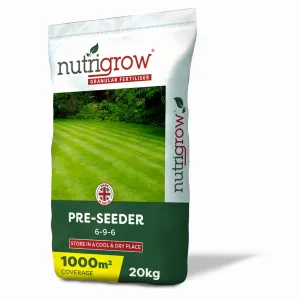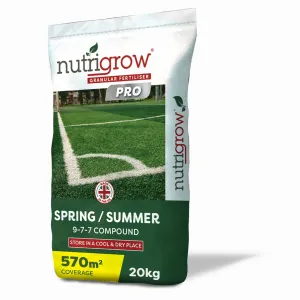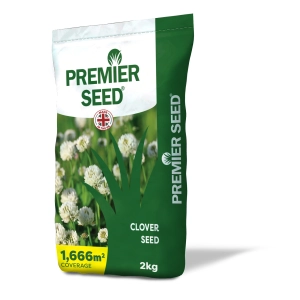If your lawn is looking a little sparse, patchy or lifeless, it will benefit from being overseeded to bring it back to life - adding colour, density, and vitality.
When to overseed
Overseeding is usually best done in the spring or autumn. You should only need to do it once a year but a lawn with excessive wear or heavy use may need overseeding in both spring and autumn.
Ideally, avoid very dry conditions and extreme temperatures when overseeding because grass seed needs average temperatures and moisture to germinate.
You can find out how long grass seed germination normally takes in our guide here.
Weed first
Weed your lawn carefully before you do anything else. If you only have a few annual weeds to contend with, pull them out by hand.
For more widespread weed problems or for tougher perennial weeds, treat them with an effective weedkiller like Dicophar. Then wait two weeks before starting overseeding.
Always follow the manufacturer’s instructions for weedkiller application rates.
Select your seed and fertiliser
Select a good quality grass seed to overseed. Premier lawn and landscape seed is exclusive to Agrigem and is perfect for general overseeding. It contains 80% perennial ryegrass and 20% strong creeping red fescue – a great balance for a resilient healthy lawn.
To aid the success of your overseeding project, you can use a pre-seeder fertiliser. Choose one with low nutrient levels - like Nutrigrow 6-9-6 - to avoid scorch on young grass as it grows. This particular fertiliser releases its nutrients over a six-week period, ideal to support grass as it establishes in your lawn.
Prepare the ground
Now you’ve eliminated weeds and bought your seed and fertiliser, the next and arguably most important step is to carefully prepare the ground.
Start by cutting the grass. Mow on a low setting to help the new seed reach the soil ready for germination and reduce the risk of it remaining in longer grass or being blown away.
Next, rake up any rogue clippings, thatch or other dead organic material. Raking at this stage also benefits overseeding as it will act to loosen the soil slightly which will help the seeds to take root.
Now water the lawn. If it has been particularly dry, you may want to water the grass for a few hours every day for a few days. Grass seed won’t germinate on dry soil, so make sure you do everything you can to make the ground moist before starting to seed.
Start spreading
Next, spread your pre-seeder fertiliser evenly over the whole lawn at the correct application rate, and then broadcast the grass seed over the fertiliser. A 10kg bag of Premier Landscape and Lawn seed will cover up to 285m sqm.
Using a spreader can make the process of distributing fertiliser and seed easier and more effective. The Professional Fertiliser Spreader from Agrigem will broadcast fertiliser and seed and has a useful 23kg capacity.
Now rake or lightly roll the seed in to help it make contact with the soil, giving it the best opportunity to germinate.
Finally, water your lawn with a fine spray to avoid disturbing the newly sown seeds too much. Newly seeded lawns usually require more watering than most people think. A gentle spray twice a day for a few weeks is ideal.
Once it has started to grow, you can reduce how many times you water. However, you should water for longer to ensure the moisture is reaching the new root system.
Making the most of your overseeded lawn
You can start mowing the lawn again once the new grass is fully established. Mow on a high setting and don’t remove more than one third of the grass blade. Read more about mowing in our guide here.
Don’t treat your new lawn for weeds until it is more than 6 months old. Your new lawn should be thicker and more healthy now – this in itself will help prevent weeds from establishing.
Use a good all round balanced lawn fertiliser like Nutrigrow 9-7-7 annually to maintain a healthy sward and ensure ongoing even growth and colour.















